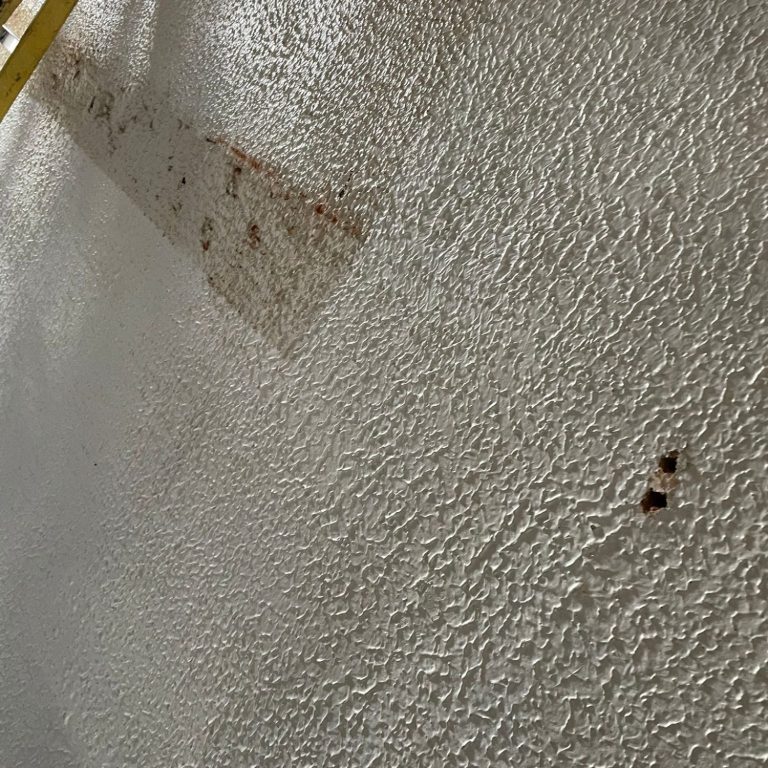What Does Asbestos Artex Look Like?
That Swirly Ceiling Might Be Hiding More Than Style
Artex ceilings were the height of fashion in the 1960s–80s, found in millions of UK homes. But behind those decorative swirls and stipples, many Artex coatings also contained a hidden danger — asbestos.
If your property was built or renovated before 1999, there’s a real chance your Artex may contain asbestos. And disturbing it — by sanding, drilling, scraping, or even painting — can release hazardous fibres into the air.
At Trent Asbestos, we regularly support homeowners, landlords and renovators in identifying and safely dealing with asbestos-containing Artex.
What Does Asbestos Artex Look Like?
Here’s the tricky part — you can’t tell by sight alone whether Artex contains asbestos. But you can watch for clues:
🌀 Patterned or Textured Finish
Swirls, stipples, combed waves or fan patterns
Common on ceilings and sometimes walls
📅 Date of Application
Most risky: 1960s to mid-1980s
May still be found in homes right up to 1999
⚪ Colour
Usually white or off-white, but can be painted over (sometimes multiple times)
🧱 Location
Often in hallways, bedrooms, stairwells and ceilings of bungalows or ex-council houses
🔎 Did You Know? Artex is a brand name, but the term is now used generically for all textured surface coatings. Not all contain asbestos, but many older ones do.
The Hidden Risk: When Artex is Damaged or Disturbed
The real danger lies not in intact Artex — but in what happens when it’s scraped, drilled, cracked or sanded. This can release asbestos fibres, which can linger in the air and be inhaled — increasing long-term health risks like mesothelioma, lung cancer, and asbestosis.
Common triggers include:
Removing light fittings
Boarding ceilings
Skimming with plaster
Drilling into ceilings for spotlights or alarms
Even professionals like electricians and decorators are at risk if they don’t know what they’re working with.
Common Questions About Asbestos in Artex
❓ Does all Artex contain asbestos?
No — but many textured coatings used before 1999 did. The only way to be sure is to get it tested.
❓ What years was asbestos used in Artex?
Asbestos was used in Artex from around the 1950s up to 1984. After that, non-asbestos versions were more common, but asbestos wasn't fully banned in the UK until 1999.
❓ Is it safe to plaster over Artex?
Only if you’ve confirmed it doesn’t contain asbestos. Otherwise, plastering can disturb fibres and should only be done by professionals with proper safety procedures.
❓ What should I do if I suspect I have asbestos Artex?
Stop work immediately and get it tested. Trent Asbestos offers affordable sample analysis and removal services across the Midlands.
Don’t Risk It — Know for Sure Before You Renovate
Homeowners often discover asbestos Artex when doing simple jobs like redecorating a child’s bedroom, installing spotlights or renovating a new property. Unfortunately, by the time it’s discovered, it’s sometimes already been disturbed.
If your ceiling looks textured or patterned — and you’re unsure of its age — don’t take chances. Peace of mind is just one test away.
Need Artex Testing or Removal? Let Trent Asbestos Help
We specialise in safe, compliant asbestos services across Derbyshire and the surrounding areas. From sample testing to full ceiling removal, we’ll guide you through every step — safely, legally, and affordably.
📞 Call us today on 01636 302 292
📧 Email info@trentasbestos.co.uk
🌐 Visit www.trentasbestos.co.uk for a free quote or callback
💡 Don’t drill it, scrape it or cover it — test it first. We’ll help you get safe, fast.



